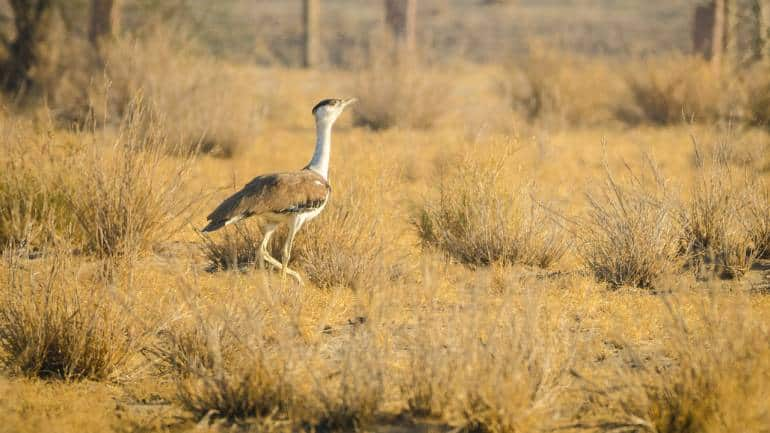



There was a time when the Great Indian Bustard (GIB) was in the running to become our National Bird. Its range extended all across western India - the Thar Desert and Deccan Plateau being its strongholds. Wildlife experts and enthusiasts recount spotting groups of up to 20 GIBs at a time in the dry grasslands. Rampant poaching, disturbance at breeding sites and loss of habitat have, however, reduced its numbers to 150 in the country (as of 2018). The critically endangered species could go extinct within 20 years, according to estimates by ornithologists.
Unfortunately, it isn’t the only bird going the way of the Dodo. The fifth edition of the flagship science publication State of the World’s Birds, released last week, has declared that nearly half of the planet’s bird species are in decline. Painting a grim picture, it states that at least 187 species of birds are either suspected or confirmed to be extinct since the year 1500, and that 1 in 8 species is currently endangered. For those not yet considered threatened, a majority are in decline and have much-depleted populations.
Cumulatively, the losses are significant, not just for bird populations but also for the planet.
Chief scientist at BirdLife International, Dr Stuart Butchart, while talking about the report, said, “Birds are useful for telling us about the state of the planet. What they say is that nature is in poor condition, lots of species are in decline.”
 Great Indian Bustard (Photo by Kesavamurthy N. via Wikimedia Commons)Local connection
Great Indian Bustard (Photo by Kesavamurthy N. via Wikimedia Commons)Local connectionThe distribution of globally threatened bird species around the world is not random – more threatened species are found in avian-rich tropics than temperate latitudes. Which means that some countries, like ours, have particularly large proportions of threatened bird species.
As per data available from BirdLife International, the world’s largest nature conservation partnership to preserve birds and their habitats, India is home to 1,210 bird species, of which 93 are globally threatened. This includes 18 critically endangered species such as the Himalayan quail, Siberian crane, GIB, Bengal florican, Indian vulture and Spoon-billed sandpiper.
Declines are not restricted to rare and threatened species. Even the populations of common and widespread species have reduced in some cases. The State of the World’s Birds report states that there’s been a 62 percent decline in forest specialists, 59 percent decline in grassland specialists and 47 percent decline in wetland specialists in the country between 2000 and 2018.
It’s manmadeHuman activities are a major source of the pressures resulting in bird population losses. The principal threats include the expansion and intensification of agriculture, which is putting pressure on 73 percent of species worldwide. Logging, invasive species, exploitation of natural resources and climate breakdown are the other main reasons for decline.
In India, for example, the single greatest cause of mortality among GIBs is collision with powerlines. According to the State of the World’s Birds report, the estimated annual mortality rate from their powerline collisions is 16 percent.
Similarly, the recent collapse in Indian vulture populations (from 40 million in the 1980s to 19,000 in 2017) has been attributed to ingestion of diclofenac through cattle carcasses. “The other two main contributing factors are habitat loss (tall trees where the bird nests being cut down) and smaller foraging grounds (leading to starvation),” says Premsagar Mestri, founder of Society of Eco-Endangered Species Conservation And Protection, an NGO that protects vultures.
Role playConservationists point out that biodiversity is not evenly distributed around the planet: some locations are disproportionately significant. They are demarcated as “biodiversity hotspots” - areas with extremely rich and diverse flora and fauna, and deeply threatened.
Officially, four out of the 36 biodiversity hotspots in the world are in India: the Himalayas, the Western Ghats, the Indo-Burma region and the Sundaland (Nicobar Islands). Birds play many important roles in these ecosystems – they are predators, pollinators, seed dispersers, scavengers and ecosystem engineers.
The Malabar Grey Hornbill, for example, is an important disperser for large seeds in the Western Ghats. This is critical for ecosystem function. Insectivorous birds, such as the Little green bee-eater, Cattle egret, Common swallow and Common myna, among others, worldwide consume an estimated 400-500 million tonnes of prey every year. Thus, they help suppress insect pest populations.
“Birds are barometers of good health for planetary health. Since they are widely distributed and easy to survey, they reveal wider trends in the ecosystem. Some of them have a crucial role to play in balancing the forest’s ecological systems by aiding in seed dispersal. This helps the forest grow and thrive, thus indirectly supporting the local wildlife population and reducing man-animal conflict to a large extent. Others are indicator species, and their presence alone is indicative of a healthy forest,” says Abhay Jha, who has been working towards bird conservation in Jharkhand for the past 15 years.
Road aheadThis makes the next decade critical for bird conservation. Fortunately, we already know what needs to be done to stop and, in some cases, reverse these losses. “One way to make an enormous impact is to conserve species in biodiversity hotspots. It is also essential to preserve intact habitats and restore degraded ecosystems,” says Jha.
Other measures include preventing overexploitation and illegal killing of birds, managing invasive alien species, tackling fisheries bycatch, and minimising the negative impacts of energy infrastructure. “The key is to find ways to conserve birds while ensuring economic progress so that it is a win-win situation for all. We have to act now,” says Jha.
Discover the latest Business News, Sensex, and Nifty updates. Obtain Personal Finance insights, tax queries, and expert opinions on Moneycontrol or download the Moneycontrol App to stay updated!
Find the best of Al News in one place, specially curated for you every weekend.
Stay on top of the latest tech trends and biggest startup news.